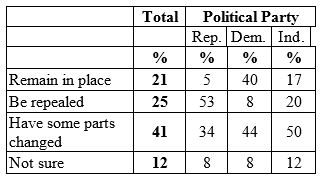CBO: Other Peoples’ Money is Popular, as is Freedom to Choose
 The big news on Thursday was that the Congressional Budget Office (CBO) released its score of the American Health Care Act (AHCA). The CBO claimed 23 million people would lose coverage within a decade under provisions found in the AHCA.
The big news on Thursday was that the Congressional Budget Office (CBO) released its score of the American Health Care Act (AHCA). The CBO claimed 23 million people would lose coverage within a decade under provisions found in the AHCA.
- About 10 million people would purportedly lose coverage due to the repealing of the individual and employer mandates.
- Another 5 million are low-income individuals living in states that did not expand Medicaid.
Basically, this is another way of saying 10 million people will decide they’d rather keep their money than have poor-value health coverage. It’s hard to understand how someone can lose something they never actually had?









